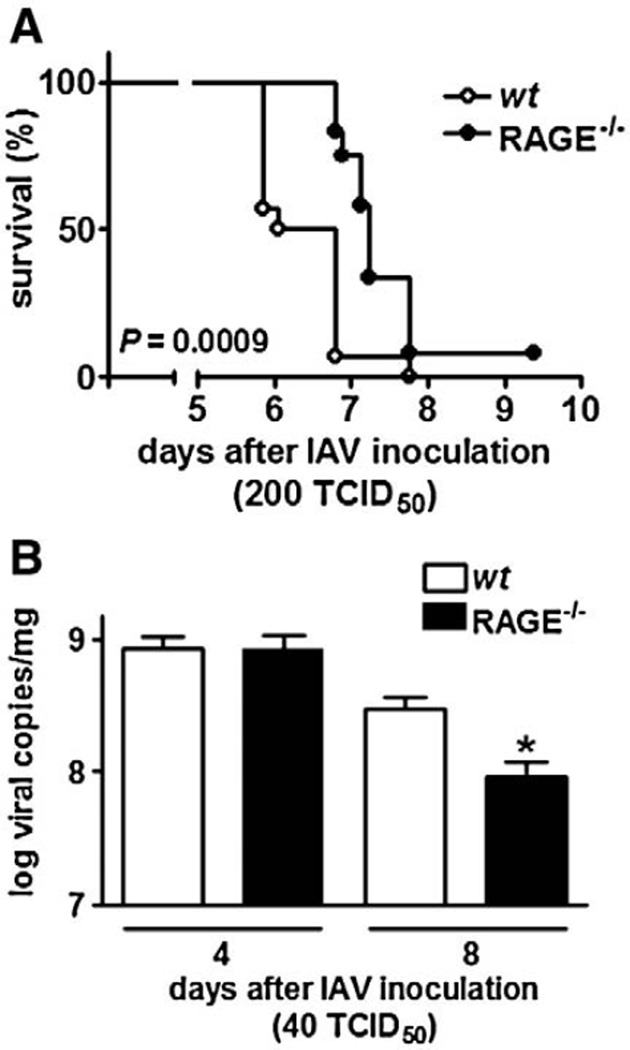Fig. 3.
(A) Receptor for advanced glycation end product deficient (RAGE−/−) mice have a prolonged survival during influenza A virus (IAV) pneumonia. Wild-type (wt; open circles) and RAGE−/− (filled circles) mice (n=12–14 mice/genotype) received 200 TCID50 influenza virus intranasally on day 0. Mice were monitored at least twice a day after inoculation. (B) Receptor for advanced glycation end product (RAGE) deficiency diminishes viral load in the lungs. Viral load in lungs in wild-type (wt; open bars) and RAGE deficient (RAGE−/−; filled bars) mice at 4 and 8 days after 40 TCID50 intranasal oculation with influenza A virus (IAV). Data are means ± SEs (n=6–8 mice/genotype). *P<0.05, vs. wt mice (Kaplan–Meier analysis by log rank test).

